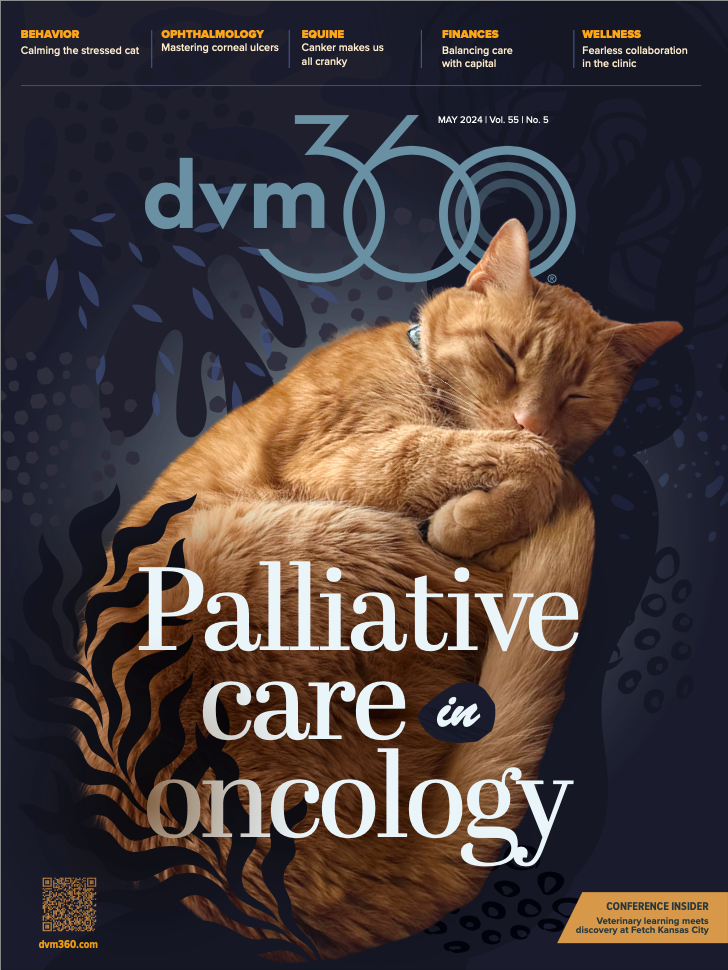Save time in dermatology appointments by utilizing your technicians
Joya Griffin, DVM, DACVD, shared her tips for improving consultations and client satisfaction
Friends Stock / stock.adobe.com

For any dermatology case, a comprehensive and thorough history is crucial to getting a complete picture of the patient and what might be going on. Joya Griffin, DVM, DACVD, star of television's "Pop Goes the Vet with Dr. Joya" on Nat Geo Wild, explained that these histories can take some time since they include several questions for the client. However, to free up some time for veterinarians and veterinary dermatologists, veterinary technicians can perform these tasks and allow the full team to be properly utilized. “These histories are really important in dermatology, and I think our histories are very specific,” Griffin stated during her session at the Fetch dvm360 conference in Charlotte, North Carolina.1
Important questions to gather from dermatology histories:
- When did it start? What is the age of onset?
- Did the pet initially present with lesions or did pruritis precede the lesions and then from the pet itching, scratching, and biting, did the lesions develop and a secondary infection?
- Are the medications that have been used that have worked or medications that haven't been tried yet?
- Was there a particular seasonality of onset?
Griffin explained that technicians can take on this role of asking the client about the patient’s history, and then the veterinarian can come in to perform the complete body check and physical examination. Following the physical exam, Griffin said, “I'm going to do some cytology and collect my samples. Then, I'm going to look at them under the scope. You'll hear a dermatologist say over and over and over again, ‘cytology, cytology, cytology,’ it's easier said than done, for sure, and it takes a lot of time. Doing it to really feel confident and comfortable and knowing what you're seeing, I really recommend starting to get used to that. There's some ways that you can try to train your staff to help them do this for you and that'll speed things up as well.”
Griffen shared what her technicians are tasked with at the Animal Dermatology Clinic in Louisville, Kentucky. “They're collecting my histories, they're presenting estimates and discharges and they're going over those discharge statements at the end of the appointment. They're also assisting in our derm workups by collecting samples. Some of them are able to read cytology to some degree, and we're trying to empower them and teach them to do that,” she said. Along with discharge statements, Griffin explained that technicians are the leaders in client education in the clinic. They are experts who can reiterate what the veterinarian needs or recommended and technicians can also answer any questions clients may have about diagnostics or treatment needed to move forward.
Another way to save time is by being fully present in each appointment and giving each client and patient your full attention. To further explain this, Griffin shared a study that was done to measure client satisfaction with consultation appointment lengths.2 What was found is that clients preferred a shorter appointment that that felt more meaningful over a longer appointment in which clients felt they weren’t aware of what was going on. “If you asked me, I would assume the more time that my client has with me, the more satisfied they're going to be. But they actually found on the contrary to that. So, to clients it really wasn't the amount of time that they spent with you, but actually the quality of the appointment,” Griffin said.
“If my staff member goes in first, that client feels like they have been attended to on time. There's someone that has put them in a room and they're taking time with them…. I think that this helps to establish that client–tech relationship,” she added.
Overall, utilizing your technicians is important for making the whole veterinary team stay involved in the clinic, but in these cases, it can also save time and improve client satisfaction. Griffin concluded her session by also reminding attendees about the importance of team bonding to further improve teamwork flow in the veterinary clinic.
References
- Griffin J. Leveraging and utilizing your staff for efficient dermatologic workups. Presented at: Fetch dvm360 conference; Charlotte, North Carolina; March 15-17, 2024.
- Corah L, Mossop L, Dean R, Cobb K. Measuring satisfaction in the small animal consultation and its relationship to consult length. Vet Rec. 2020;187(11):446. doi:10.1136/vr.105910
